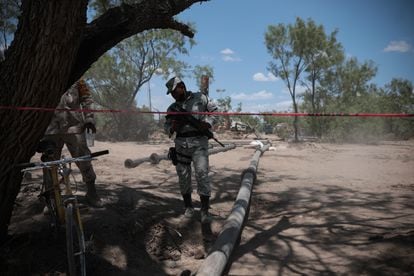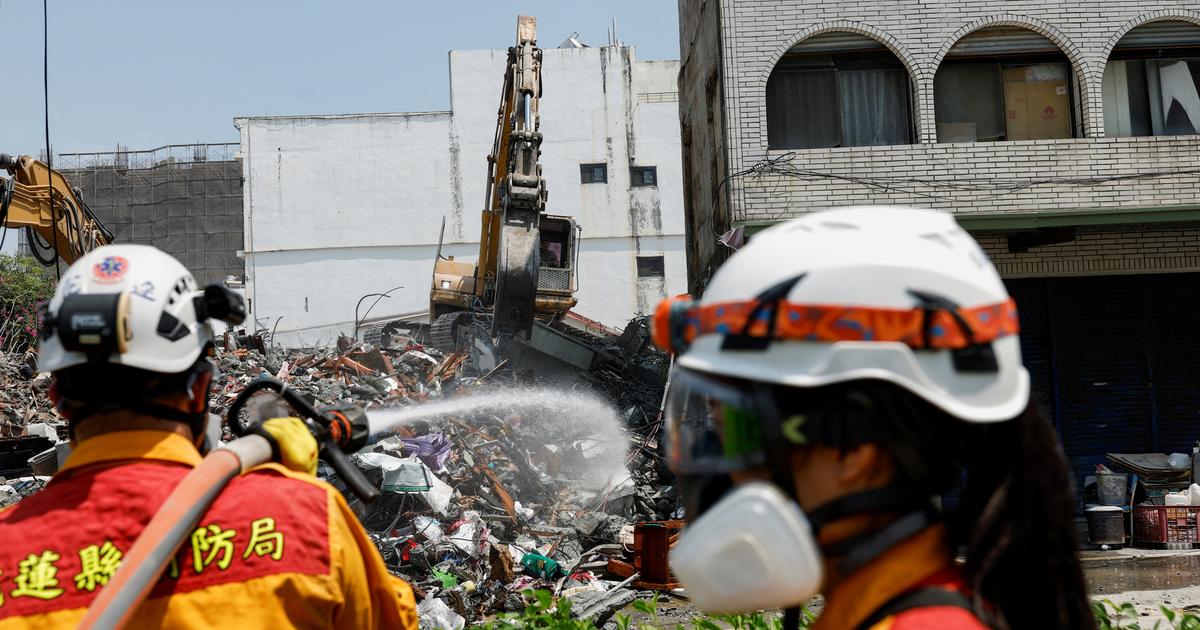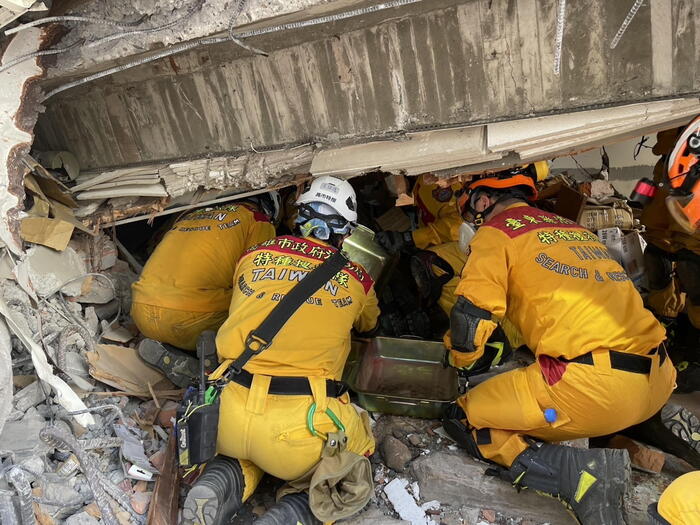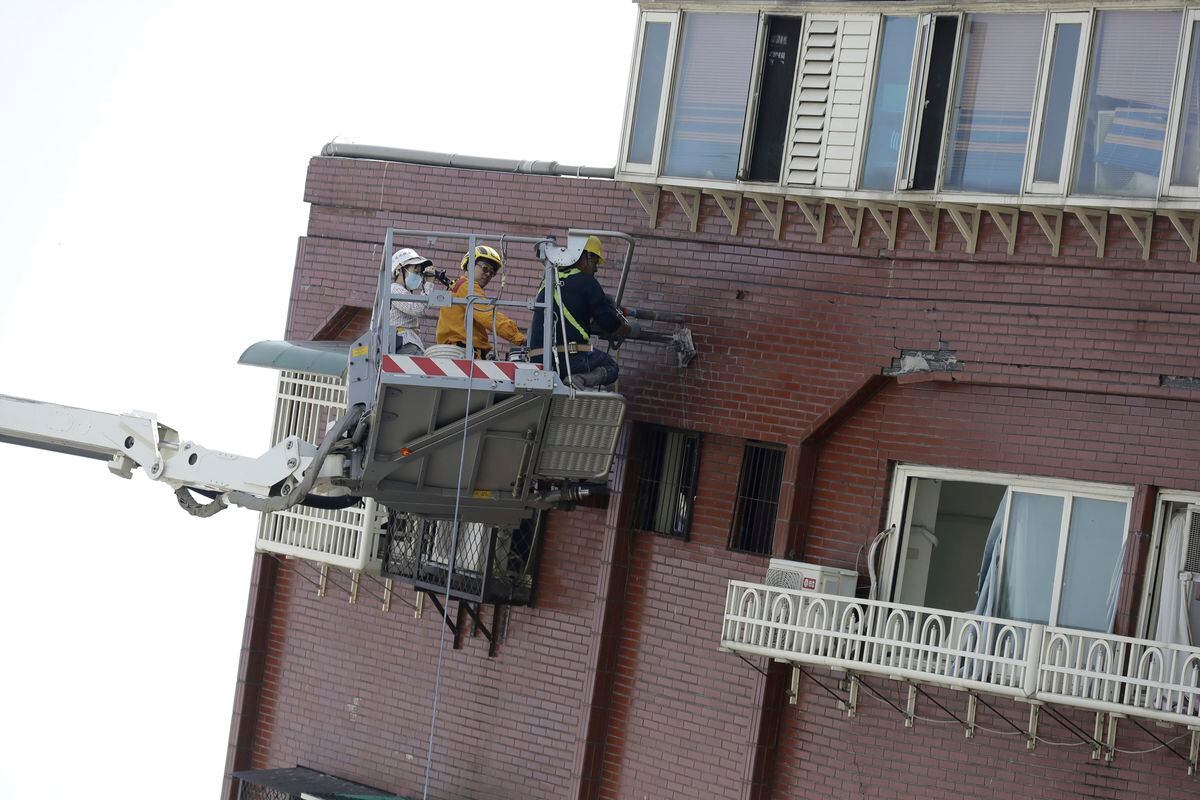The situation is tense with every minute that passes without news at the collapsed coal mine in Sabinas, Coahuila, where 10 miners were trapped by a landslide last Wednesday.
Their relatives, each day more hopeless, still hope to see the workers alive again, but the rescue continues without palpable progress.
Around half past two on Monday afternoon, an Army soldier descended into the wells for a few minutes to inspect his condition, but this first expedition has concluded without any clear progress, according to a member of the rescue team.
The head of the Secretary of National Defense (Sedena), Luis Cresencio Sandoval, said this Monday that they estimate they can start the rescue operation in the middle of this week.
Six days ago, the day laborers were working in three wells a few meters from Las Conchas, a farm abandoned almost 40 years ago and full of water.
When they bit, they found a leak of liquid, which in a matter of seconds flooded the tunnels.
Five men, those who worked farthest from the disused mine, were able to get out.
The rest remained underground.
This is what is known at the moment about the situation:
Workers drill into the ground as part of the rescue strategy for miners trapped underground in the State of Coahuila (Mexico).EMILIO ESPEJEL
rescue alive
The chances of rescuing the miners alive decrease by the minute.
The 10 men have been trapped for more than six days at a depth of about 60 meters, without food or drinking water, and in the middle of a flood that at its highest reached a level of almost 40 meters deep.
The only hope that experts value —and that relatives repeat to themselves like a mantra— is that they have found an air bubble where they can resist and wait to be saved.
It wouldn't be the first time it's happened.
David Huerta, a former veteran miner, explained to this newspaper that years ago another group of miners survived more than eight days of collapse thanks to an air bubble.
When will the miners leave?
There is no clear date.
The latest estimates speak of the middle of the week, but the information is constantly changing.
This Monday at noon, a soldier from the rescue team went down to the well to check the condition inside, but this first expedition ended without any clear progress.
A team of at least six divers from Sedena has been at the site since Thursday, but they have not yet entered the tunnels.
Some experts say it's dangerous because they don't know what they can find below.
On the night from Saturday to Sunday, cameras were introduced to check the condition inside the wells, which, according to several sources from the search team, showed that the water "is calm" and there are no obstacles.
A specialized underwater drone has been brought in to try and locate the 10 men.
Water level
Water is the main enemy to beat in wells.
The day of the collapse it was around 40 meters high in wells 60 meters deep.
Since then, the most repeated question around the mine is: how deep is the water?
Authorities brought 19 specialized pumps to the scene to drain the liquid, but not all of them are working.
Even so, 386 liters per second are being extracted, according to the Coahuila government.
The reports change from time to time, the authorities contradict each other and the information that comes from the rescue teams and experts installed on the scene is opaque.
Some sources that work in the rescue work assure that it is already below 20 meters in height in one of the wells.
The problem is that in Las Conchas there is a huge volume of water,
accumulated over 40 years of neglect.
As you draw the liquid from the well, it leaks back out, making the job extremely difficult.
An element of the national guard protects one of the pumps for water extraction, this Sunday. Emilio Espejel
Who makes up the rescue teams?
According to the authorities, there are more than 500 agents between teams of professional rescuers, engineers, specialists in the field.
Members of different agencies participate, such as the Mexican Social Security Institute (IMSS);
the Ministry of Labor and Social Welfare (STPS);
Civil protection;
National Guard soldiers;
and the Sedena.
The relatives of the miners, however, defend that the manual and heavier work is being carried out by the colleagues of the trapped workers and other members of the community, who know the area, the wells and are used to this type of accident.
The familiars
The Army guards a security perimeter that no one can access other than one or two direct relatives of each trapped miner.
The rest —brothers-in-law, aunts, nephews, sons-in-law, cousins, close friends— wander around the mine and resist in makeshift camps with tents.
They sleep in their cars, on plastic chairs or on blankets on the floor.
However, with each passing day, the number of relatives seen in the place is less: the forces to resist the elements are exhausted, they cannot afford to continue missing work, hope is running out.
Many no longer speak of rescuing the miners alive, but of recovering the bodies so they can be taken home and buried.
All the relatives interviewed denounce that the Sabinas authorities have barely helped with logistics, and it is their neighbors from the surrounding towns who bring and donate food and water.
The soldiers have placed vehicles and fences with black tarps so that they cannot see what is happening inside the security perimeter, an action that angered relatives.
His main complaint is the lack of information on the progress of the rescue - or the lack of it - by those responsible.
On Sunday, during the visit of the Mexican president, Andrés Manuel López Obrador, relatives rebuked him and a tense scene was generated with shoving and shouting between them and National Guard agents.
Relatives of the miners trapped underground sleep in their truck on the outskirts of the rescue area, in Sabinas, Coahuila (Mexico). Emilio Espejel (EL PAÍS)
Responsible
The Attorney General's Office (FGR) has opened an investigation folder on the collapse of the mine.
The mining company is Minera Río Sabinas SA de CV, which was sold in November 2012 to Compañía Minera El Pinabete.
All the testimonies consulted indicate that one of the owners is Régulo Zapata Jaime, former mayor of the municipality of Sabinas.
He denied it in a video on social networks, where he assured that he only worked as an advisor for the company.
The information released indicates that Cristian Solís Arriaga is the owner of the land where the collapse occurred.
However, many of the voices questioned in this regard point out that Solís Agarra only works as a figurehead, as a scapegoat in case something goes wrong.
Cristina Auerbach, one of the leading mining experts in the region and an activist in defense of miners' rights, explains: “The concession is in the name of Pinabete and there is a company with the same name that has a contract.
The owners of Pinabete are the partners of Régulo Zapata, who was mayor of Sabinas.
The one they are putting as the owner [Solís Agarra], who they say is responsible, is a boy of 27 or 28 years old, obviously he is not the owner of the mine.
This started when [former Mexican President Carlos] Salinas de Gortari privatized mining.
Most of the mines belonged to the State, and when the State privatizes them, all the old mines are given to the local caciques.
They are a small group of families who kept everything: at the same time they are coal entrepreneurs, ranchers and mayors”.
subscribe here
to the
newsletter
of EL PAÍS México and receive all the informative keys of the current affairs of this country









